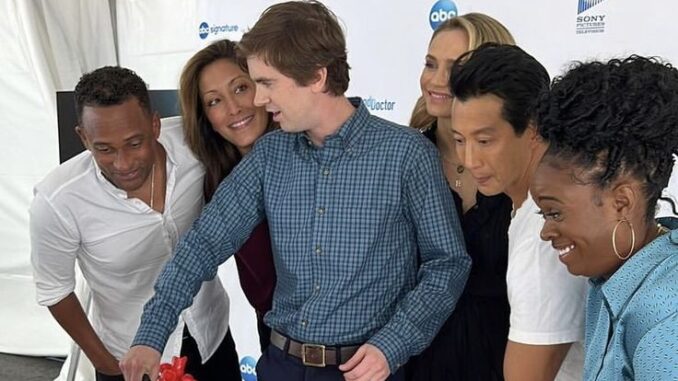
Television dramas about hospitals are nothing new. From the hallways of ER to the emotional roller coasters of Grey’s Anatomy, the genre is filled with tension, heartbreak, and occasional triumph. But The Good Doctor, led by Freddie Highmore’s masterful performance, doesn’t just revisit familiar ground—it reinvents it. And in doing so, it makes medicine matter again.
At the heart of this reinvention is Dr. Shaun Murphy. A young man with autism and savant syndrome, Shaun steps into San Jose St. Bonaventure Hospital not just as a surgical resident, but as a disruptive force of empathy, precision, and truth. From the moment he delivers a life-saving diagnosis in a crowded airport, Shaun makes one thing clear: he may not fit the mold, but he’s exactly the kind of doctor the world needs.
Freddie Highmore’s portrayal is nothing short of transformational. He strips away performance ego and allows us to witness Shaun in all his complexity. This is not a character designed to inspire pity or be placed on a pedestal. Shaun is fiercely capable, sometimes infuriating, and always compelling. Highmore’s greatest achievement is making us forget we’re watching a performance at all.
One of the show’s signature strengths is its ability to humanize medicine. Every case isn’t just about a procedure—it’s about people. And Shaun, despite (or perhaps because of) his differences, connects to his patients on a level that transcends traditional bedside manner. He sees the person before the prognosis. He asks the questions others overlook. And often, he finds the solutions that save lives.

But The Good Doctor doesn’t stop at individual victories. It asks bigger questions. What does it mean to trust someone who sees the world differently? How do institutions bend—or break—to accommodate brilliance outside the norm? Can emotional intuition coexist with analytical genius? Through Shaun’s journey, these questions come alive, not as academic exercises, but as urgent, human dilemmas.
Shaun’s relationship with his mentor, Dr. Glassman, becomes one of the show’s emotional anchors. It’s a bond forged in loyalty, mutual respect, and the kind of tough love that only grows stronger over time. Glassman doesn’t coddle Shaun—but he believes in him, fiercely. Their scenes together are often quiet but deeply moving, offering a counterpoint to the chaos of hospital life.
Romantically, Shaun’s journey is equally nuanced. His relationship with Lea explores the challenges of love when communication isn’t always easy. But rather than gloss over the hard parts, the show dives into them. It portrays disagreements, misunderstandings, and growth with a refreshing lack of melodrama. This is love as a verb, not a fantasy—a process of learning and adjusting that feels as real as any scalpel on screen.
Behind the camera, Freddie Highmore’s influence is just as impactful. As a producer, he ensures the show treats its subject matter with authenticity and care. From consulting with individuals on the autism spectrum to working with medical professionals, Highmore and the creative team aim for realism—not just in diagnosis, but in emotion.
And that’s what The Good Doctor gets so right. It’s a show that trusts its audience to handle complexity. It doesn’t shy away from heartbreak or moral ambiguity. It doesn’t wrap everything in neat endings. Instead, it leans into the messiness of life, where even the best doctors can’t always save their patients, and even the most brilliant minds struggle with matters of the heart.
The result is a series that resonates far beyond the operating room. It reminds us that healing isn’t just about medicine—it’s about connection. About being seen, heard, and understood. And through Shaun Murphy, The Good Doctor gives us all a little more hope that maybe, just maybe, those things are possible.
